Ever mistaken a pesky weed for a promising squash plant in your garden? You’re not alone.
Many weeds, especially in their early stages, can fool even the most seasoned gardeners with their squash-like characteristics.
This article dives deep into the world of squash plant look-alikes, dissecting their similarities and distinctions.
Also, check out our guide to identifying lookalike lettuce and lookalike carrot tops in your garden.
What does the squash plant look like?
“Squash” typically refers to plants in the Cucurbita genus, which is part of the gourd (Cucurbitaceae) family, includes cucumbers, melons, squashes, and pumpkins. These plants tend to share certain characteristics:
- They are usually sprawling or vining plants, although some are more bush-like.
- Their leaves are generally large and broad with a heart or palm shape, often with deep lobes.
- They have yellow or orange flowers that are typically fairly large.
- They produce large and fleshy fruits.
Weeds that look like squash plants
While there aren’t many weeds that closely resemble a squash plant in its entirety, there are some that may have similar characteristics, especially in their early stages of growth. Here are a few:
1. Velvetleaf (Abutilon theophrasti)
Known as “velvetleaf”, this common agricultural weed gets its name from the soft, velvety texture of its leaves which are covered in fine hairs. The leaves are large, lobed, and heart-shaped which makes it look very much like a squash plant especially when the plant is young.
However, the difference is more obvious when it matures growing upright and can reach up to several feet tall, while squash plants are typically vining or bush-like, spreading out along the ground.
Its flowers are yellow to orange and bell-shaped, just like those of a squash plant, but are smaller.
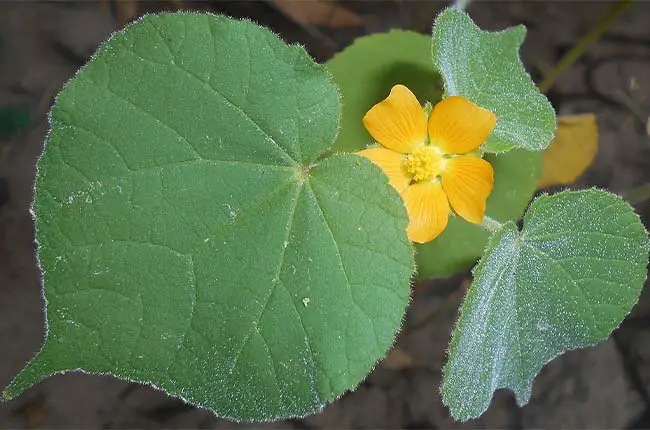
(Salicyna, CC BY-SA 4.0, via Wikimedia Commons)
2. Black Nightshade (Solanum nigrum)
Black nightshade is another weed that can sometimes be mistaken for squash in its early stages. It has broad leaves that can look somewhat similar to squash leaves although the shape is more round while squash leaves are more heart-shaped.
The differences become clear as the plant matures growing upright with smaller, white or purplish, star-shaped flowers and small round berry fruits.
3. Wild Cucumber (Echinocystis lobata)
Also known as “Balsam Apple”, the Wild Cucumber is a weed that belongs to the same family (Cucurbitaceae) as squash, both showing a vining habit with tendrils for climbing and spreading. Both plants also have large lobed leaves, which can make them look like young squash plants.
But the differences are notable as the Wild Cucumber matures with small white flowers and fruits that are small, spiky, and not edible.
Although both are vines, squash plants are more compact, while Wild Cucumber can grow up to 25 feet (7.6 meters) in a single season.

(Laval University, CC BY-SA 4.0, via Wikimedia Commons)
4. Wild Watermelon (Citrullus lanatus var. citroides)
Belonging to the same Cucurbitaceae family as squash, Wild Watermelon plants look very similar to squash plants with their sprawling vines and tendrils for climbing, with their large, lobed leaves and yellow flowers.
However, Wild Watermelon vines can grow much longer, with some reaching up to 10 feet (3 meters) or more.
Also, their flowers are smaller, and the leaves are smoother with a waxy coating, unlike the rough texture of squash leaves.

(Eiku, CC BY-SA 4.0, via Wikimedia Commons)
5. Manroot (Marah oreganus)
Just like squash, Manroot is a vine in the Cucurbitaceae family and can grow to 30 feet or more. It also has large, lobed leaves.
But its flowers are small and white, and the fruits are spiny and inedible.
Its roots are large and tuberous, unlike the fibrous root system of squash plants.

6. Morning Glory (Ipomoea spp.)
Some species of Morning Glory could be mistaken for young squash plants for their lobed leaves and vining habits.
But the lobes of Morning Glory leaves are not as deep as squash leaves.
Morning Glory climbs by twining their stems around supports, while squash plants produce tendrils for climbing and spreading.
Also, the flowers of Morning Glory are large and funnel-shaped and come in a variety of colors, including blue, pink, purple, and white.

(Cbaile19, CC0, via Wikimedia Commons)
7. Cocklebur (Xanthium strumarium)
This plant is a common weed in many regions. Its seedlings have large, somewhat lobed leaves that can look similar to squash leaves.
However, the differences are easy to identify as it matures, grows upright, and produces small green flowers and spiny fruit.

(Laval University, CC BY-SA 4.0, via Wikimedia Commons)
8. Jimsonweed (Datura stramonium)
Also known as “Thorn Apple”, Jimsonweed is a weed that can be found in many parts of the world. Its leaves are large and somewhat lobed, so it could potentially be mistaken for squash when it’s young.
However, Jimsonweed grows upright with large, white to purple trumpet-shaped flowers and spiky capsule-like fruits, making it quite distinct from squash as it matures.
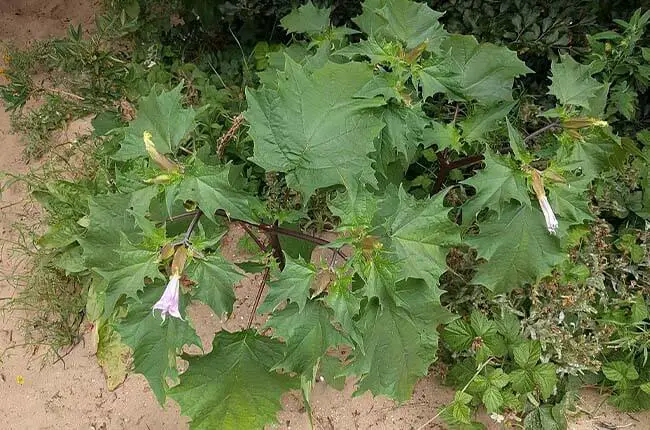
(Michel Langeveld, CC BY-SA 4.0, via Wikimedia Commons)
9. Bur Cucumber (Sicyos angulatus)
Belonging to the same Cucurbitaceae family as squash, this weed can be mistaken for squash for its long vines with lobed leaves.
However, Bur Cucumber can grow quite large, reaching lengths of 15 feet (4.5 meters) or more.
It also produces small greenish flowers and spiny fruits that look like a tiny cucumber or a bur, which are very different from squash plants.
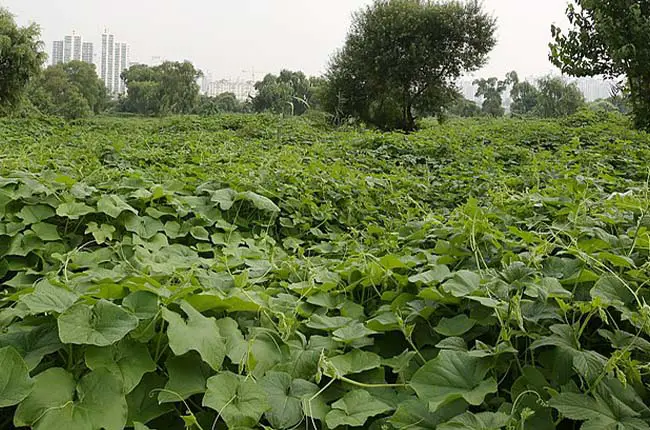
(Korea.net / Korean Culture and Information Service (Photographer name), CC BY-SA 2.0, via Wikimedia Commons)
10. Ground Cherry (Physalis spp.)
Some species of ground cherry have broad, somewhat heart-shaped leaves, which could be mistaken for squash leaves.
However, they produce small, round fruit enclosed in a papery husk, which is quite different from squash fruit. Also, they have an upright growth habit, which is different from the vining squash.
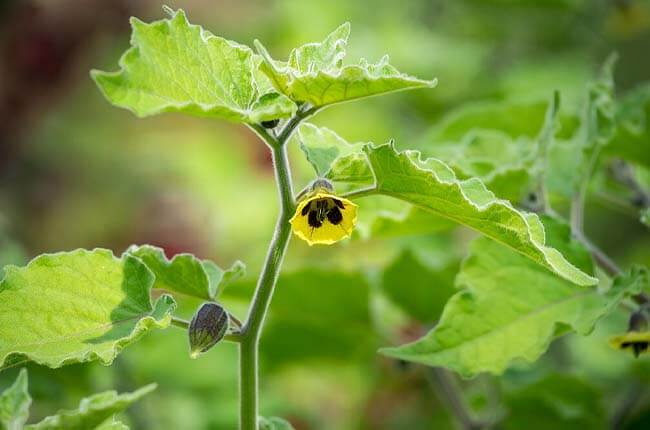
(Plenuska, CC BY-SA 4.0, via Wikimedia Commons)
11. Buffalo Bur (Solanum rostratum)
Buffalo Bur is an invasive plant with large, lobed leaves that could be mistaken for squash leaves when the plant is young.
But it grows in an upright fashion reaching several feet tall. And it produces yellow, star-shaped flowers and spiny fruit, making it quite distinct from squash.
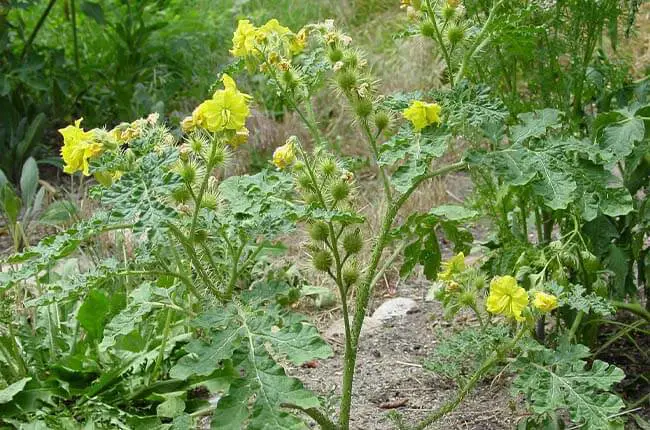
(leighannemcc, CC BY-SA 2.0, via Wikimedia Commons)
How to identify squash plants vs. lookalikes?
Many weeds, especially when young, can easily be confused with squash plants due to their large, broad, heart-shaped leaves and vining nature. However, the differences become obvious as they mature, particularly in terms of the plant size, growing habit, flower color, and fruit shape.
Happy gardening!
Related
Top 10 Weeds That Deceive as Carrot Tops (Pictures)
12 Weeds That Look Like Lettuce (& How to Identify Them)
Arugula vs. Weed Lookalikes: A Visual Guide
- Top 6 Drip Irrigation Systems for Raised Beds (2025) - January 31, 2025
- Top 10 Orchid Fertilizers: A Comprehensive Review (2025) - January 16, 2025
- Top 6 Slow-Release Fertilizers for Houseplants & Veggies (2025) - January 15, 2025
